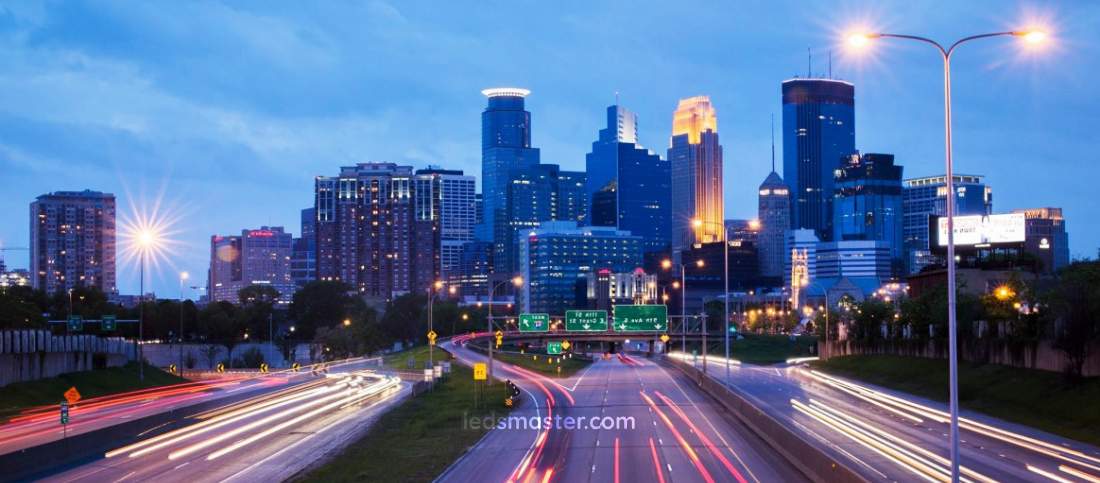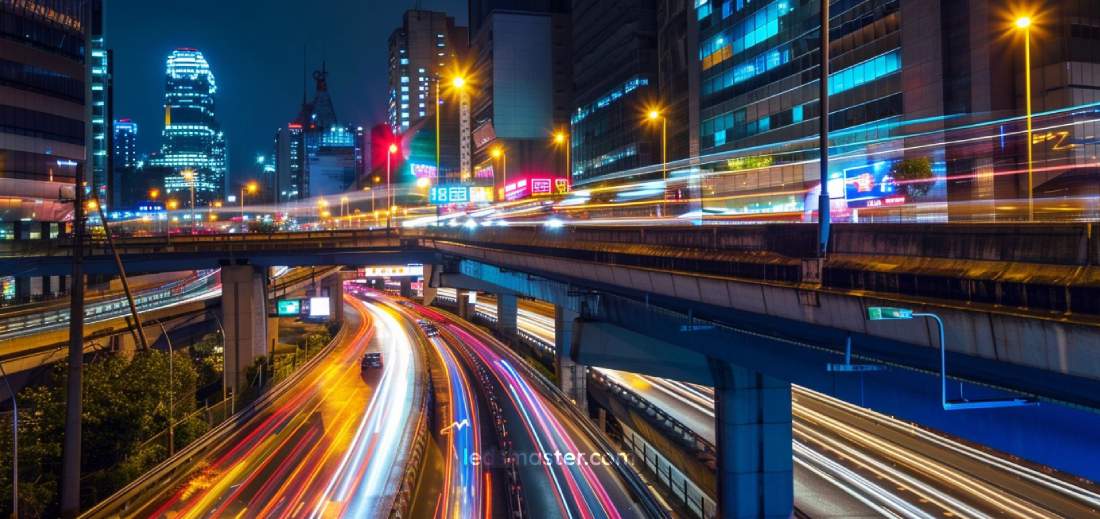
As cities and municipalities strive to modernize their infrastructures, the cost of upgrading street lighting systems becomes a pressing concern.
Get your complimentary lighting design today
Street lighting is a critical component of urban infrastructure, providing safety, security, and aesthetic value to cities and communities. However, the cost of installing and maintaining street lighting systems can be significant. This article delves into various aspects of street lighting costs, including the initial purchase price, installation expenses, operational costs, and the benefits of energy-efficient solutions.
Table of Contents
ToggleThe initial cost of street lighting involves purchasing the light fixtures and the associated installation expenses. The price of street lights can vary widely based on the type and technology used. Traditional high-pressure sodium (HPS) lamps and mercury vapor lamps are generally less expensive initially but come with higher energy consumption and maintenance costs. On average, an HPS street light can cost between $100 to $250 per unit.
In contrast, modern LED street lights, which are known for their energy efficiency and longer lifespan, can range from $300 to $500 per unit. The higher upfront cost of LEDs is offset by their lower operational costs and reduced maintenance requirements.
Installation costs depend on several factors, including the complexity of the installation, the type of poles used, and labor costs. On average, the installation of a street light can range from $1,000 to $2,000 per unit. This includes the cost of poles, wiring, and labor. For a kilometer of street lighting, assuming lights are spaced 30 meters apart, the cost can range from $50,000 to $100,000.

When calculating the cost of street lighting per kilometer, it’s essential to consider both the number of lights required and the spacing between them. Typically, street lights are spaced between 25 to 40 meters apart. For this calculation, let’s assume an average spacing of 30 meters.
For a kilometer (1,000 meters) of street, approximately 33 street lights are needed (1,000 / 30 ≈ 33). Using the average costs provided earlier:
High-Pressure Sodium (HPS) Lamps
At $150 per unit and $1,500 installation cost per unit, the total cost per kilometer would be around $54,450 (33 units x ($150 + $1,500)).
LED Street Lights
At $400 per unit and $1,500 installation cost per unit, the total cost per kilometer would be approximately $62,700 (33 units x ($400 + $1,500)).
These figures highlight that while LED street lights have a higher initial cost, their benefits in terms of energy efficiency and maintenance may justify the investment in the long run.
The operational costs of street lighting primarily include electricity consumption and maintenance. Traditional HPS lamps consume more electricity compared to LEDs. An average HPS lamp consumes around 150 watts per hour, whereas an equivalent LED consumes approximately 50 watts per hour.
To understand the cost implications, let’s consider a scenario where street lights operate for 12 hours a day:
HPS Lamps
33 lamps per kilometer x 150 watts x 12 hours = 59,400 watt-hours or 59.4 kWh per day. At an average electricity rate of $0.12 per kWh, the daily cost is around $7.13, and the annual cost is approximately $2,602.
LED Street Lights
33 lamps per kilometer x 50 watts x 12 hours = 19,800 watt-hours or 19.8 kWh per day. At the same electricity rate, the daily cost is around $2.38, and the annual cost is approximately $868.
Switching from HPS to LED street lights can result in significant electricity savings. In this example, the annual savings per kilometer would be approximately $1,734, which can add up substantially when considering the total length of streets in a city.

Maintenance costs are another critical factor in the overall cost of street lighting. HPS lamps typically have a lifespan of around 24,000 hours, requiring replacement every 5 to 6 years under normal operating conditions. LED lights, on the other hand, have a lifespan of up to 100,000 hours, reducing the frequency of replacements to every 20 to 25 years.
The maintenance costs for HPS lamps, including labor and equipment, can be around $100 to $200 per lamp per year. For LEDs, the reduced maintenance frequency translates to lower annual costs, typically ranging from $20 to $50 per lamp per year.
Given the significant differences in operational and maintenance costs, energy-efficient street lighting solutions like LEDs are becoming increasingly popular. LED street lights not only reduce electricity consumption but also contribute to lower greenhouse gas emissions. This is particularly important as cities strive to meet sustainability goals and reduce their carbon footprints.
Investing in energy-efficient street lighting can also lead to long-term financial savings for municipalities. Although the initial investment is higher, the reduced electricity and maintenance costs, combined with potential government incentives for energy efficiency, make LEDs a financially viable option.
Upgrading street lighting systems can be a significant financial undertaking for many cities and municipalities, especially those with limited budgets. However, there are several financing options and strategies available to help manage these costs effectively and make the transition to modern, energy-efficient lighting solutions more feasible.
Many local, state, and federal government programs offer financial assistance to support the adoption of energy-efficient technologies. These grants can significantly offset the initial costs of purchasing and installing new street lights.
For example, the U.S. Department of Energy and various state energy offices provide funding opportunities specifically for energy-efficient street lighting projects. These programs are often designed to help municipalities reduce their energy consumption and carbon footprint while improving public safety and reducing long-term costs. Applying for these grants typically involves a detailed proposal outlining the project’s scope, expected energy savings, and environmental benefits.
In addition to direct grants, some programs offer tax credits or rebates for installing energy-efficient lighting systems. These financial incentives can reduce the overall cost of the project and improve its return on investment.
In a PPP, a private company provides the necessary capital and expertise to design, install, and maintain the street lighting system, while the public entity benefits from the improved infrastructure without the upfront financial burden.
Under a typical PPP arrangement, the private partner may assume the responsibility for the initial investment, and in return, they might receive payments from the public entity over a set period. These payments can be structured to come from the savings generated by reduced energy consumption and lower maintenance costs. This model allows municipalities to leverage private sector resources and expertise while minimizing their initial financial outlay.
PPPs can also include performance-based contracts, where the payment to the private partner is linked to the actual performance and energy savings achieved by the new lighting system. This ensures that the private partner has a vested interest in delivering a high-quality, energy-efficient solution.
Performance-based contracts are a financing strategy where the cost savings from reduced energy consumption and maintenance are used to fund the street lighting upgrade. These contracts, often referred to as energy performance contracts (EPCs), involve a detailed analysis of the expected savings from the new lighting system.
In a performance-based contract, the contractor guarantees specific energy savings and operational efficiencies. The municipality or city then repays the contractor over time using the savings realized from lower energy bills and maintenance costs. This approach shifts the financial risk from the public entity to the contractor, as the contractor is responsible for ensuring that the projected savings are achieved.
Performance-based contracts are particularly attractive for municipalities with limited upfront capital but with a strong interest in reducing long-term operational costs. By leveraging the savings generated from the new lighting system, cities can upgrade their infrastructure without incurring substantial initial expenses.
Energy Savings Performance Contracts (ESPCs) are a specific type of performance-based contract that focuses on achieving energy savings. Under an ESPC, an energy service company (ESCO) conducts an energy audit, designs and implements energy-saving measures, and guarantees a certain level of energy savings.
The ESCO is compensated based on the actual savings achieved, which are used to cover the costs of the improvements. This arrangement allows municipalities to undertake street lighting upgrades with minimal upfront investment and ensures that the project delivers the expected financial benefits.
Municipal financing options, such as bonds, can also be used to fund street lighting projects. Municipal bonds are debt securities issued by local governments to raise funds for capital improvements. The proceeds from the bond issuance are used to pay for the street lighting upgrade, and the bonds are repaid over time from municipal revenues.
Green bonds, a type of municipal bond specifically used to finance environmentally friendly projects, are increasingly popular for funding energy-efficient street lighting systems. These bonds attract investors interested in supporting sustainable initiatives and can offer favorable terms for municipalities.
When financing street lighting projects, it is essential to conduct a comprehensive financial analysis to ensure that the selected financing option aligns with the municipality’s budgetary constraints and long-term financial goals. This analysis should include a detailed projection of energy savings, maintenance cost reductions, and the overall return on investment.
By leveraging energy savings and considering the long-term financial benefits of modern street lighting systems, municipalities can make informed decisions about financing options and effectively manage their budgets. Combining grants, public-private partnerships, performance-based contracts, and municipal financing can provide a robust framework for upgrading street lighting infrastructure while minimizing financial risks and maximizing benefits.
Street lighting is an essential aspect of urban infrastructure, contributing to safety and security. While the initial costs of purchasing and installing street lights can be substantial, the long-term operational and maintenance savings offered by energy-efficient solutions like LED street lights can justify the investment. By understanding the various cost components and leveraging financing options, cities can make informed decisions to implement sustainable and cost-effective street lighting systems.